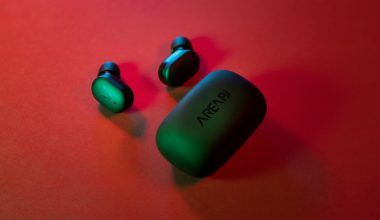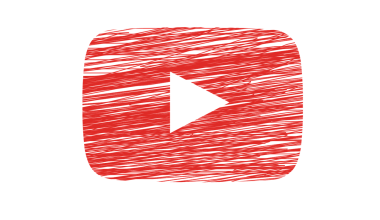In today’s digital era, getting your music out to the world is easier than ever. But beyond just reaching your audience, there’s an even greater opportunity—earning from your tracks. Whether you’re an emerging artist or an established musician, learning how to monetize your track on all digital stores easily can significantly boost your income while enhancing your visibility. Let’s explore a comprehensive guide on how you can start making money from your music with minimal hassle.
Understanding Music Monetization
Monetizing your music means earning royalties, payments, or other forms of income from your tracks being played, downloaded, or streamed. Digital stores like Spotify, Apple Music, Amazon Music, and others have made it simple for artists to get paid for their work. But the process can still feel overwhelming if you’re new to the industry.
Thankfully, with the right tools and strategies, you can set up your tracks for success across all platforms. Let’s break down each step so you can maximize your earning potential.
Choosing the Right Distribution Partner
To monetize your track on digital stores, you need a reliable music distributor. These platforms act as intermediaries between you and the digital stores. They ensure your music is delivered to all major streaming platforms and stores globally.
Popular distribution services include:
- DistroKid: Affordable and efficient for independent artists.
- Deliver My Tune: Known for its comprehensive royalty collection system.
- CD Baby: A longstanding favorite with a user-friendly interface.
- Amuse: Offers free distribution with advanced features for premium users.
When choosing a distributor, focus on their pricing, store partnerships, and whether they support monetization features like sync licensing and YouTube Content ID.
Preparing Your Track for Distribution
Before your music reaches the world, ensure it’s ready for a professional debut. This includes:
- High-quality audio: Upload tracks in formats like WAV or FLAC for the best sound quality.
- Metadata: Add correct song titles, artist names, and album information.
- Album art: Your cover art must meet the specific requirements of each platform, usually 3000×3000 pixels in JPEG format.
Attention to detail here ensures your track stands out on digital stores and increases your chances of earning.
Registering for Royalties
Monetizing your music involves more than just uploading tracks. You need to register your songs with collection agencies to ensure you receive royalties from every stream or download.
Start with these two key types of royalties:
- Performance royalties: Paid when your music is played on the radio or performed live.
- Mechanical royalties: Paid for every stream, download, or physical sale.
To collect these, register with organizations like ASCAP, BMI, or PRS. Additionally, use platforms like Songtrust to simplify royalty management.
Leveraging YouTube Content ID
Did you know you can monetize your track on YouTube too? By enabling Content ID, you can earn revenue whenever your music is used in videos uploaded by others. Many distributors offer this feature, but you can also directly register your tracks with YouTube.
Maximizing Revenue Through Sync Licensing
Sync licensing allows your music to be used in commercials, films, or TV shows. This can be a game-changer for earning big from your tracks. Distributors like CD Baby and TuneCore often provide sync licensing as part of their services, helping you tap into this lucrative market.
Promoting Your Music Effectively
Simply uploading your track isn’t enough to monetize effectively. You need to market your music to drive streams and downloads. Here’s how:
- Social media marketing: Share teasers, behind-the-scenes clips, and engaging posts on platforms like Instagram, Facebook, and TikTok.
- Collaborations: Partner with other artists or influencers to amplify your reach.
- Playlists: Submit your music to popular playlists on Spotify and Apple Music to gain visibility.
The more people hear your track, the more revenue you generate.
Understanding Platform-Specific Features
Each digital store offers unique features that can help you maximize earnings:
- Spotify: Use Spotify for Artists to track performance and pitch tracks for editorial playlists.
- Apple Music: Leverage pre-adds and exclusive content to build excitement.
- Amazon Music: Optimize for Alexa devices by creating engaging voice commands.
Learning how each platform works ensures you make the most out of your releases.
Monetizing Live Performances and Merchandise
Your digital music sales can complement other income streams like live performances and merchandise. Consider offering exclusive tracks or bundles that include digital downloads alongside merchandise to increase sales.
Staying Consistent
Monetizing your track isn’t a one-time effort. Regularly releasing new music, engaging with fans, and optimizing your strategy is crucial for long-term success. Consistency keeps your audience interested and ensures your revenue continues to grow.
Tools to Simplify the Process
Several tools can make it even easier to monetize your track on digital stores:
- Hootsuite: For scheduling promotional posts across social media.
- Canva: To design stunning album covers and social media graphics.
- Google Analytics: To track website traffic and conversions from your campaigns.
By using these tools, you can focus more on creating music while your promotions run seamlessly.
Conclusion
Monetizing your track on all digital stores easily isn’t just a dream—it’s a practical and achievable goal. By choosing the right distributor, registering for royalties, and promoting your music effectively, you can create a steady income stream from your art. The world of digital music is vast, and the opportunities are endless if you take the right steps.
Now’s the time to act. Whether you’re starting with your first release or looking to improve your monetization strategy, the tips shared here can set you on the path to success. Begin today, and make your music work for you across every platform.
For further reading, explore these related articles:
- Everything You Need to Know About Desi Kalakaar Song Download
- The History and Legacy of the Happy Birthday Old Song
For additional resources on music marketing and distribution, visit Deliver My Tune.






